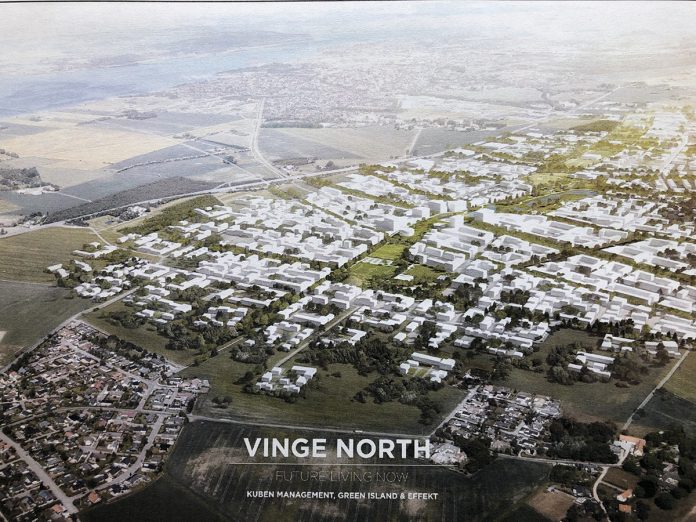Peder Vejsig Pedersen, Senior Advisor, MSc, European Green Cities highlights how Green Island is developing fossil free communities
At the moment (during 2019), Green Island is developing a plan for a fossil-free city area with 2,000 housing units at Vinge North in the municipality of Frederikssund, situated 40 km north-west of Copenhagen in Denmark.
The vision is to obtain 100% of the energy supply from renewable energy in a cost-effective way for the inhabitants there. This will, in practice, mean use of both wind and solar energy and solar thermal collectors in the area, therefore, supplying the main part of the energy needs.
The heat supply for the “Active House” optimised housing units will utilise low-temperature district heating, distributing heat from local heat pumps, which are connected to a local Aquifer Thermal Energy Storage (ATES) system. The ATES system utilises the groundwater as a heat source but it is based on a thermal balance from year to year, secured by supply from a large solar thermal collector installation.
To be certain all the heating and electricity needs are covered, local battery storage will also be used and besides there is a backup supply of heat and electricity from generators that utilise locally produced biogas, coming from wastewater and organic waste. As a second and third priority, the use of a local gasification unit and use of certified biogas-based gas coming from the gas grid.
In the Green Island project at Vinge North, there is used a new multi-layout thought process taking place, in that you replace the normal linear economic model (take, make, dispose) with a sustainable circular approach.
And this new way of thinking benefits from the fact that in Denmark, where almost 60% of all buildings are supplied by district heating, there is now a challenge to make a transition to a much more electricity-based district heating model, due to the high supplies of wind energy during long periods of time. This has been agreed by all political parties in Denmark and the laws and regulations have now changed accordingly, so it becomes beneficial to introduce heat pumps on a large scale in connection with district heating systems.
In many cases, this can also include use of the mentioned ATES technology, which the Danish company Enopsol has long-term experience in and is preparing a new project for the village of Kyndby Huse, also situated in the municipality of Frederikssund, where 160 existing housing units will be equipped with local heat pumps in combination with an ATES system, at a total investment cost of €20,000 per housing unit.
Please note: This is a commercial profile
Peder Vejsig Pedersen
Senior Advisor, MSc
European Green Cities
Tel: +45 2046 6755












